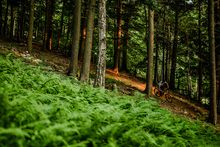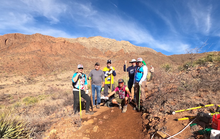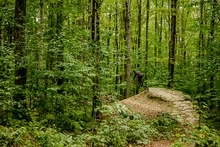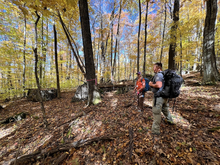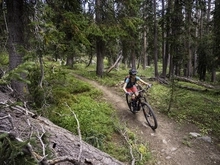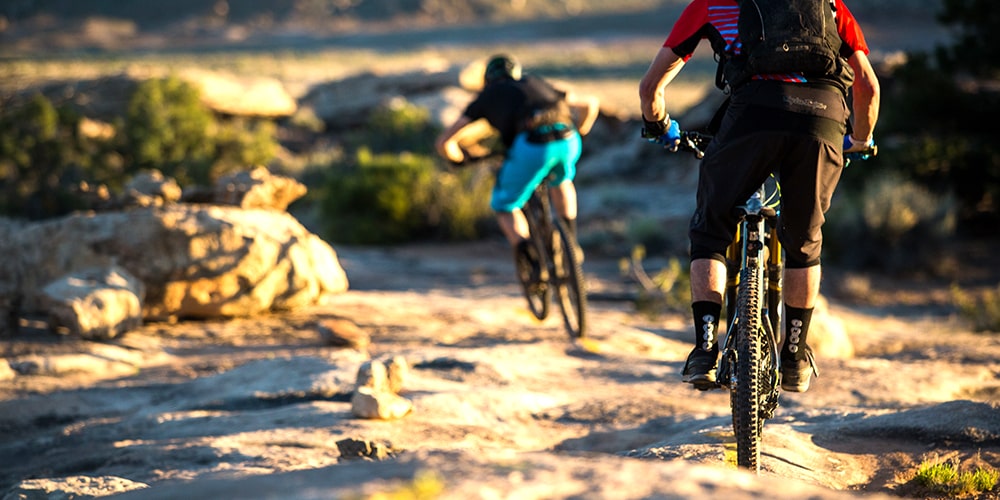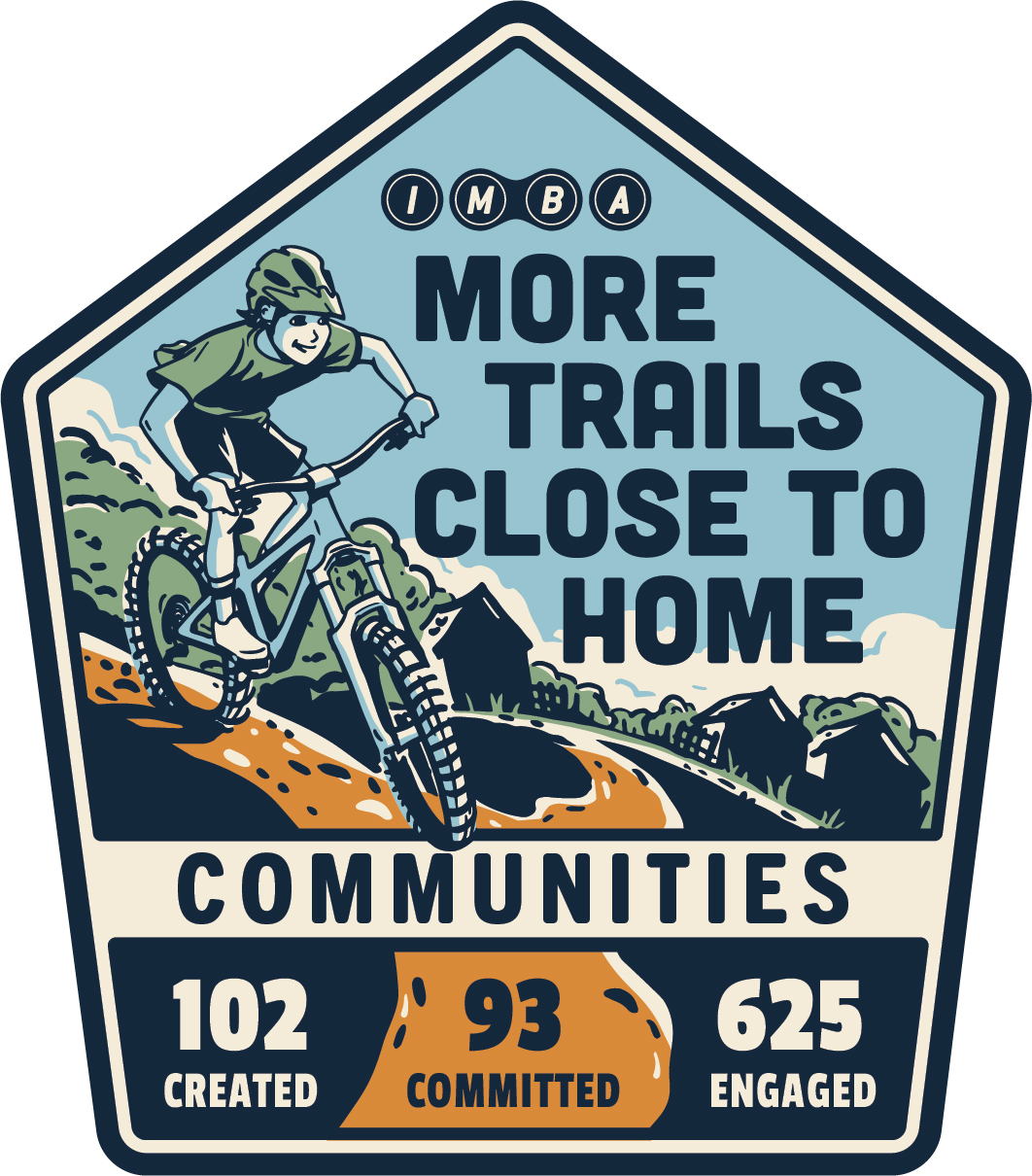Mountain Bikers Riding Bikes, Talking Trails #8
At first glance, one might assume that if you’ve been to one part of the 6th largest states in the country, you’ve probably seen it all. Of course, one would be entirely wrong to make that assumption.
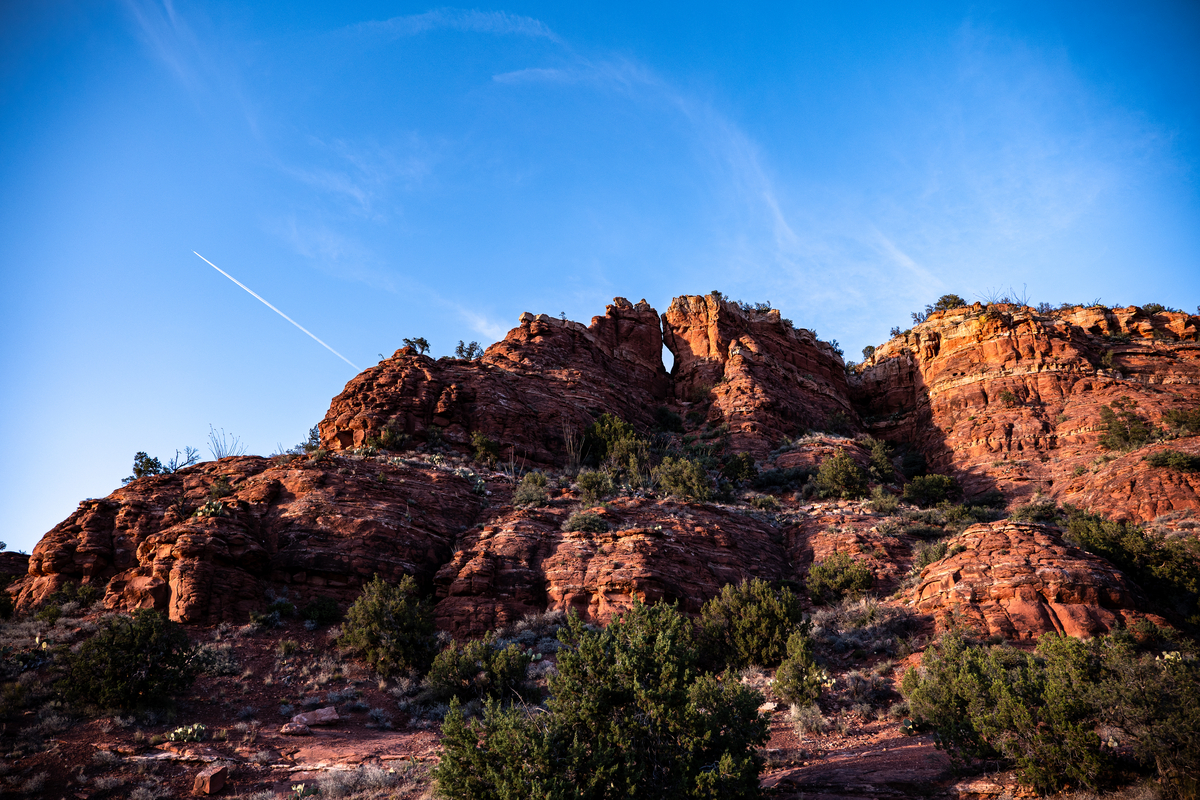 Perhaps no other state in the country offers a complete representation of the American Southwest than Arizona, also known as the “Grand Canyon State.” Yes, it is decidedly a desert climate from corner to corner, but the nuance and variety throughout are staggering and quite beautiful to behold, from the aforementioned Grand Canyon, one of the world’s Seven Great Wonders, to the towering Saguaros found throughout the Sonoran Desert, to the juniper and ponderosa covered slopes found throughout the northern portion of the state, to one of the most well-preserved meteor impact craters found on the planet. Arizona’s topography, geography, and geology make for one of the planet's more compelling and comprehensive outdoor recreation meccas.
Perhaps no other state in the country offers a complete representation of the American Southwest than Arizona, also known as the “Grand Canyon State.” Yes, it is decidedly a desert climate from corner to corner, but the nuance and variety throughout are staggering and quite beautiful to behold, from the aforementioned Grand Canyon, one of the world’s Seven Great Wonders, to the towering Saguaros found throughout the Sonoran Desert, to the juniper and ponderosa covered slopes found throughout the northern portion of the state, to one of the most well-preserved meteor impact craters found on the planet. Arizona’s topography, geography, and geology make for one of the planet's more compelling and comprehensive outdoor recreation meccas.

The same can be said specifically about its mountain biking as well. From the fabled backcountry descents on Mount Lemmon to the urban paradise of South Mountain, and the XC training grounds of Prescott, Arizona has a number of spots on most riders’ proverbial bucket lists, and without a doubt, there is one in particular that stands at the top of the heap: Sedona.
Sedona is a lot of things to a lot of people. For some, it is the epicenter of “new age healing,” often involving purported energy vortexes as a part of the spiritual energizing process. For others, Sedona is a perfect place for artistic expression, with no shortage of natural beauty to serve as inspiration for creative pursuits. For mountain bikers, Sedona represents unmatched red rock shredder, with hundreds of miles of trails available for riders of all stripes, surrounded by just shy of a million acres of pristine national forest land.
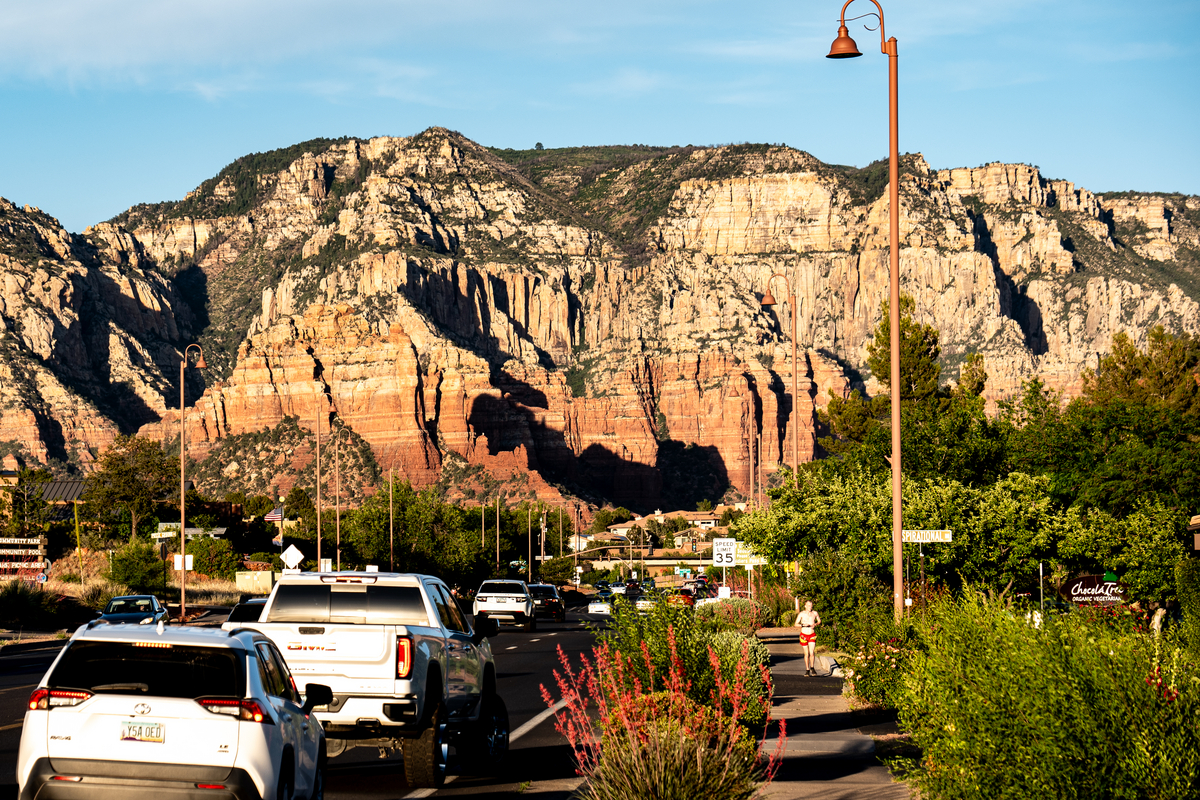
Throughout the year, though especially during Spring and Autumn, the trails are chock full of riders grinning ear-to-ear, with opportunities ranging from flat and mellow to heart-in-your-throat scary and everything in between. While it might be easy to assume that the nature of the sandstone makes for easy work when it comes to trail design and building, the truth is much further from that than many realize.
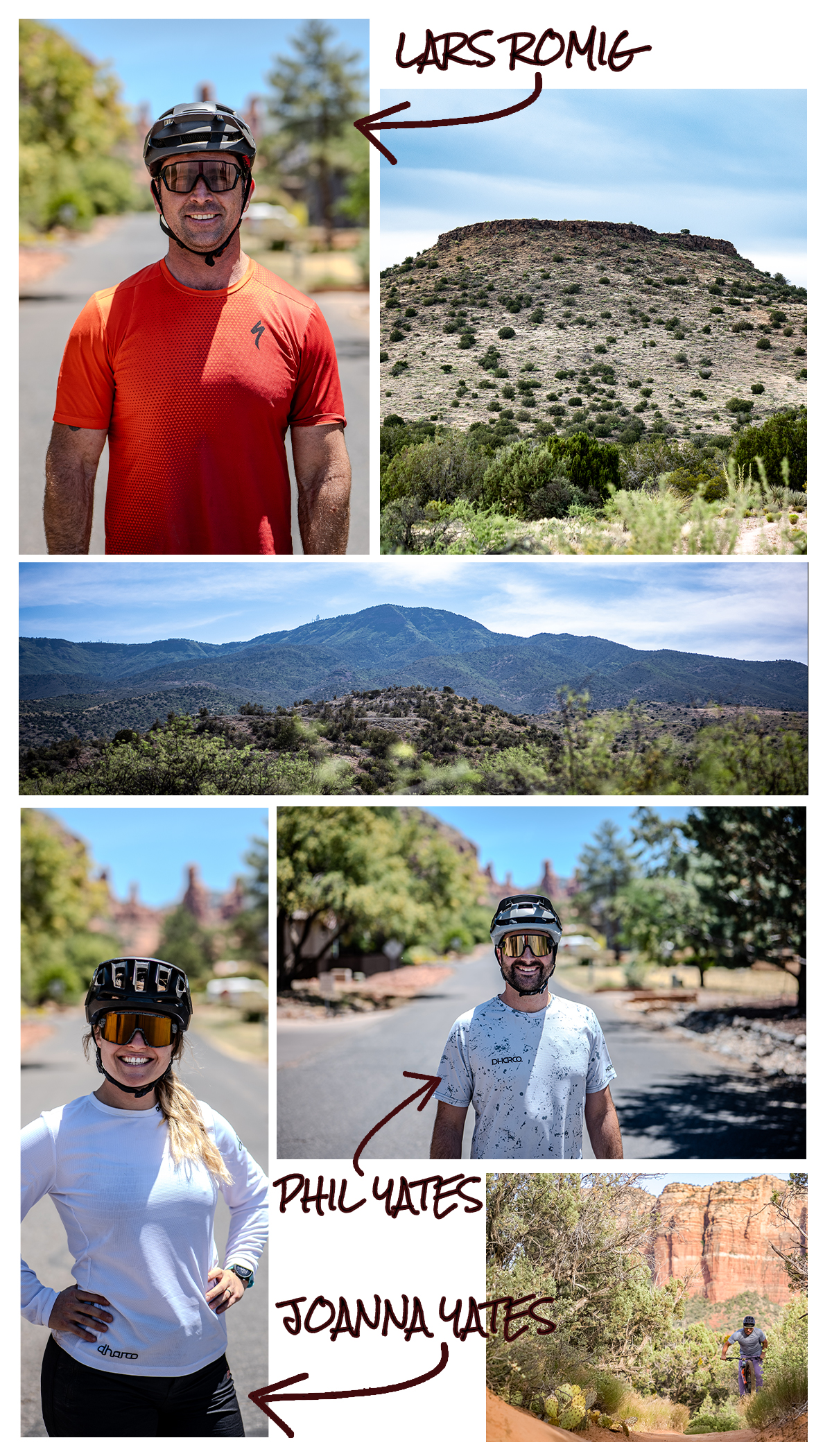
“There’s actually a fair bit of trail building in Sedona,” Lars Romig tells me as we stop to look at some handiwork on the Slim Shady trail. “More than you realize. We put a lot of thought into these to allow people to go over the rocks rather than through the rocks.”
Lars is a director at large for the Verve Valley Cyclists Coalition, the local cycling advocacy organization, and is the head of the mountain bike subcommittee. I’m exploring a few trails for the first time with Lars alongside Sedona’s MTB power couple, Joanna and Phil Yates. Joanna is on the media subcommittee for the VVCC, coaches for Sedona Mountain Bike Coaching, and is a guide for Trail Lovers. Phil is also on the VVCC mountain bike subcommittee and guides alongside Joanna for Trail Lovers.
“A lot of the rock armoring you see in Sedona is purpose-built to create a more durable surface,” Phil adds to Lars’ point. “We want to prevent erosion. This one is special because it was purpose-built to have more fun.”
I asked them how much actual “building” can be done in a part of the country with such a prevalent hard rock surface area.
“We try to figure out a couple of things,” Lars shares. “First, we determine how to keep the surface durable to last a long time. We are also always looking for ways to add some subtle features to the trail. We need to figure out how to herd the riders for the community. There are a lot of corrosive soils out here just off trail, so we work to keep trails as narrow as possible so that we aren’t seeing damage done to the landscape due to widening corridors.”

Phil agrees. “It’s always a guarantee: anywhere you want to add to the surface durability, you won’t be able to find any rocks. A lot of times, when we organize these volunteer work days, we’ll have guys with rock baskets hauling them up to the trail from a wash somewhere further away. It’s never as easy as you think. The Forest Service and Red Rock Trail Crew use some pretty modern techniques as well. They have diamond-bladed concrete saws, which allows them to shape the rock in really unique ways.”
Though blessed with an inordinate amount of natural beauty and generally stunning weather, places like Sedona don’t happen by accident. It takes a collective vision and the willingness of a community to build and maintain so much of what makes this place special. That motivation becomes exponential when you can witness growth on both a personal scale and community-wide, and as Joanna notes before our start of the Hi-Line trail, bikes are a decidedly effective way to experience that growth firsthand.
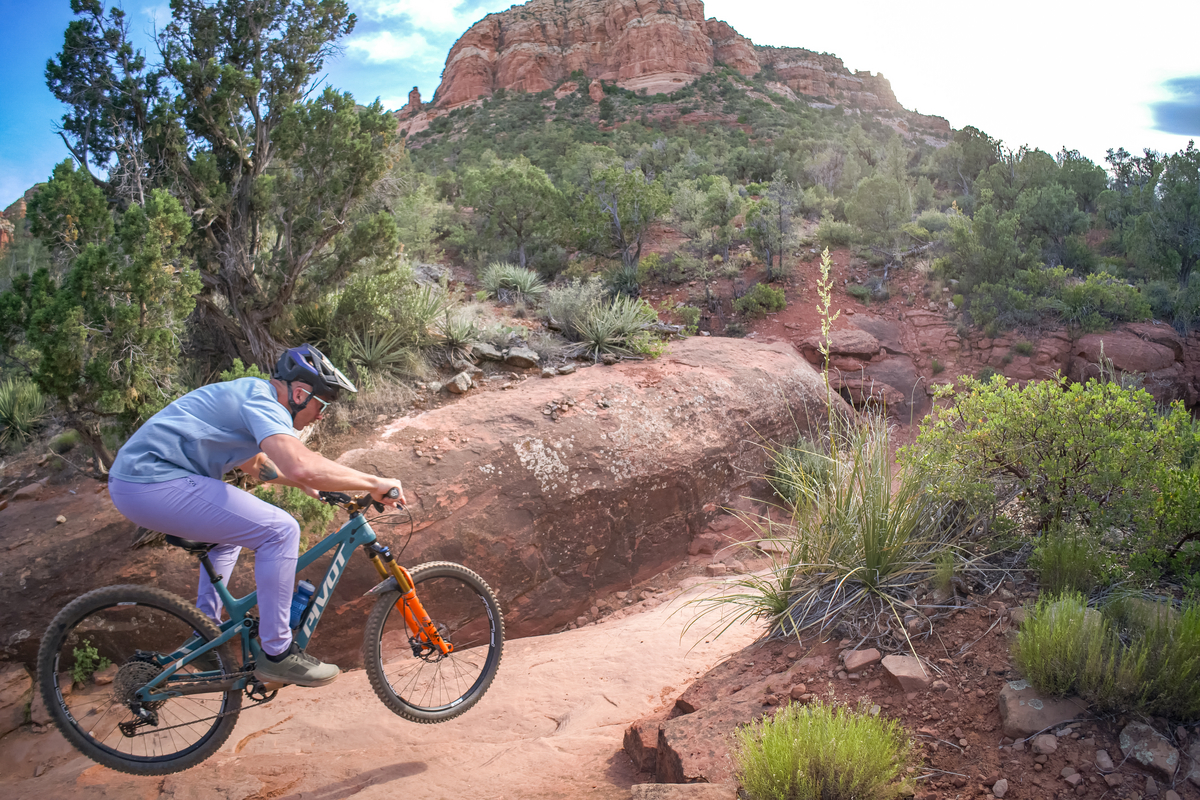
“When I first came to Sedona 10 years ago,” she says as we catch our breath on the heels of the climb up from Slim Shady. “I couldn’t ride any of this. Now I get to guide and coach people on these trails, which is really special because it shows the progression of you and your riding over the years.”


